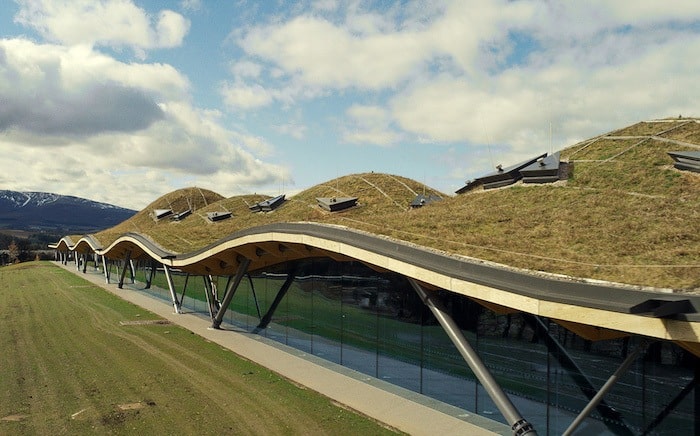Nowadays, a whiskey distillery is the core concept of a business area. Since the early 2010s, openings (or re-openings) of distilleries started in traditional whisk(e)y producing countries have greatly expanded as the direct consequence of sales trends. This has, in turn, attracted some of the biggest investors, who are building distilleries looking like novel cathedrals. It has also brought about some greater concerns about sustainability.
The architectural part
Stunning structures bring a novel identity to new production sites and to brands such as that of Kentucky’s planned Owl Park or the J.W. Rutledge Distillery. The Macallan distillery or the Port Ellen distillery in Scotland, the latter of whose re-opening has been postponed by 2021, let the light freely enter these places, allowing one to see the stills while operating thanks to wide glass windows.
Currently, more than 30 distillery projects are set to open either by 2020 or by 2021. They can sometimes take interesting forms, such as former traditional farm steading buildings like the Inverharroch site in Scotland, that correspond to historical and heritage sites reckoned as birthplaces of malt whisky.

The business part
While these new distilleries appeal as a new consumer category, it is obvious that growth of tourism and all the related structures and travel accommodations contribute to overall economical regional growth. They allow a direct relationship to create a recurrent customer, constituting an array of facilities linked to the distillery:
- a warehouse
- a visitor center
- a bar and a tasting room
- a store
Dedicated whiskey ‘trails’ that host tastings and tours in the area connect all the distilleries. In addition, they connect still-makers, coopers, historic bars and all the professionals related to the whiskey industry as well. Situations like this exist in Scotland in particular, where whisky production is related to the tourist interest, as with the ‘Malt Whisky Trail’ linking distilleries and a cooper of the Speyside (Scotland) area to promote and enhance tourism in a region whose main economic resources are related to the whisky industry. The overall growth in Scotland’s distilling and brewing business base is bringing spin-off benefits to the tourism sector, with record numbers exploring Scotland’s whisky trails and brewery tours.
How much money does one need to start a distillery ? Cost of such new sites can range from several hundreds of thousands of dollars to levels as high as $150 million for the novel Kentucky Owl Park or even more. In Scotland, the cost of the Macallan distillery was as high as £140 million. In Ireland, the Sliabh Liag Distillery has secured planning approval to build a €6 million distillery and a visitor center in Donegal. Special mention also goes to a new whisky distillery in China ($150 million) that’s planned to be fully functional in 2021, with a market release of its first whisky in 2023.
The sustainability part
Related to the opening of distilleries in the early 2010s are the fact that sustainable practices also began. From this time pollution prevention; zero waste and greenhouse gas reduction; energy management and conservation; and water regulation were immediately of concern. Futurist architectures supporting sustainable practices can be found, for example, with the Dalmunach Distillery near Aberlour, Moray. Above all, this site is saving 38% of its energy cost when compared to the industry average.
In addiiton, opened in 2014, The Ardnamurchan Distillery is wholly reliant on renewable energy. Local suppliers are the fuel source of the distillery, such as with hydro-electricity generation from a nearby river. In the Swedish MackMyra distillery, gravity leads the production from milling and mashing the malt at the top to the distillation and filling of the casks at the bottom.







